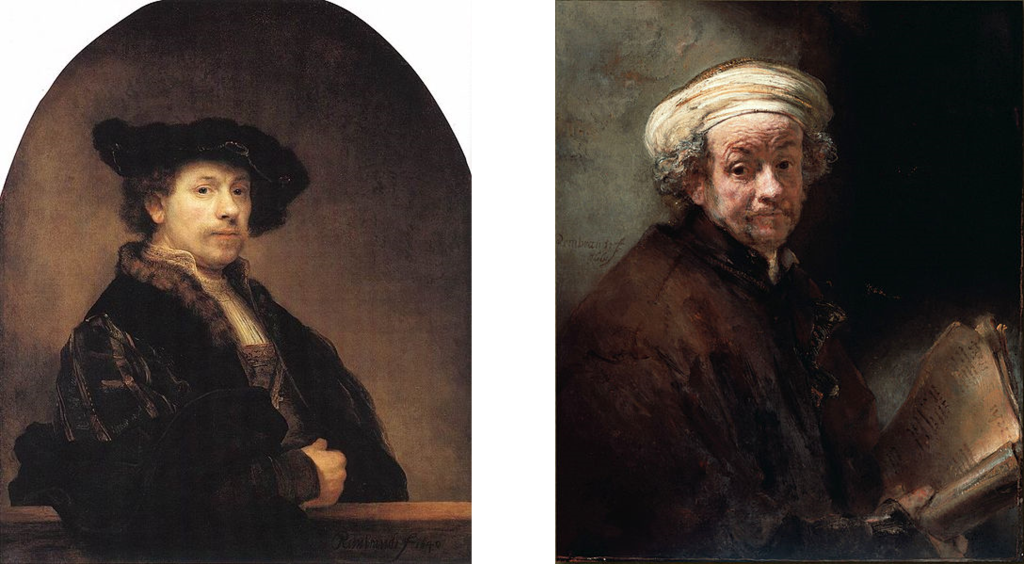Rembrandt, Self-Portraits
Rembrandt painted many portraits and more self-portraits than any other artist before the seventeenth century. Including paintings, etching, and drawings, he produced at least seventy-five self-portraits, which constitute a visual autobiography. They chronicle Rembrandt’s changing fortunes and moods and, above all, his journey through life from youth to old age. In his Self-Portrait at age thirty-four, Rembrandt is dressed in velvet and fur, resting his arm on a windowsill in the manner of portraits by Raphael and Titian. He looks optimistically out on the world. In the facial shading, Rembrandt creates a sense of inner character visible through the “window” of the eyes, just as the picture itself is a “window” on the figure.

Eight years before the 1640 self-portrait, Rembrandt married the young and wealthy Saskia, whom he adored. By 1661, after several personal tragedies, including the death of Saskia, Rembrandt is an older and more sorrowful figure. He is no longer the prosperous, bourgeois artist, confident of his future. Now he is a “Saint Paul,” humbled and saddened; his pose is less assertive, and he seems weighed down by his own body. Barely visible is the sword, which is Saint Paul’s traditional attribute; it emerges in flecks of gold from under his left arm. Rather than endow the saint with a conventional halo, Rembrandt weaves a yellow band into the cloth of his hat, merging light, color, and the paint itself with content in a unique way. The figure looks up from the rather worn pages of an open book, as if shrugging his shoulders at the twists of fate. The slight tilt of the artist’s head and the loose brushwork emphasize the sagging cheeks. The raised eyebrows create a pattern of wrinkles on Rembrandt’s forehead, and his hair has turned gray. As in the earlier pictures, Rembrandt highlights the face and hand, leaving a darkened surrounding space from which the figure seems to emerge.[1]
- Laurie Schneider Adams, Art Across Time, vol. 2, 4th ed., (New York: McGraw-Hill, 2011), 642-643. ↵

